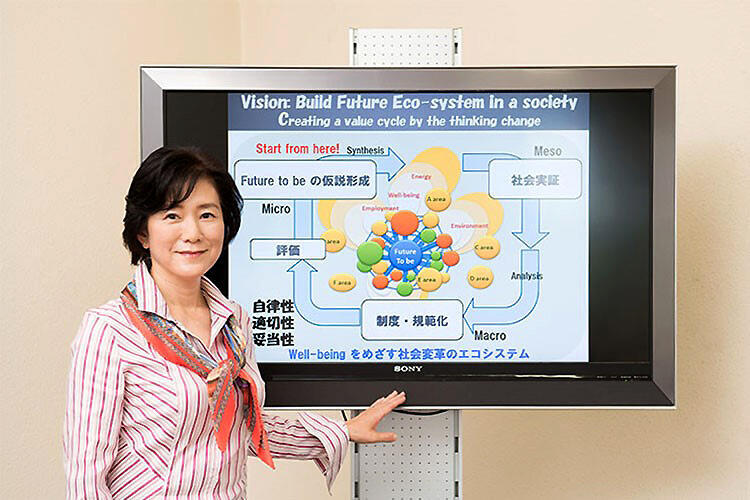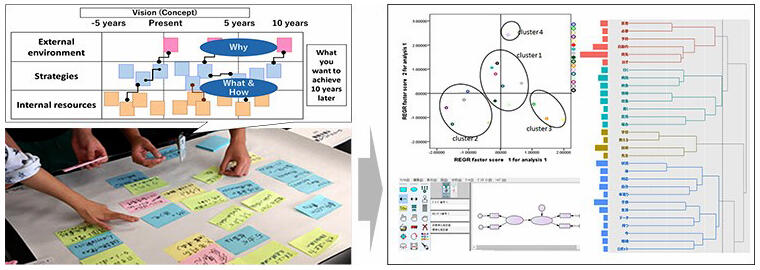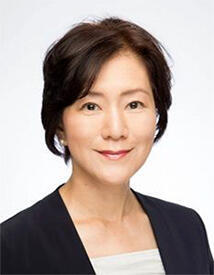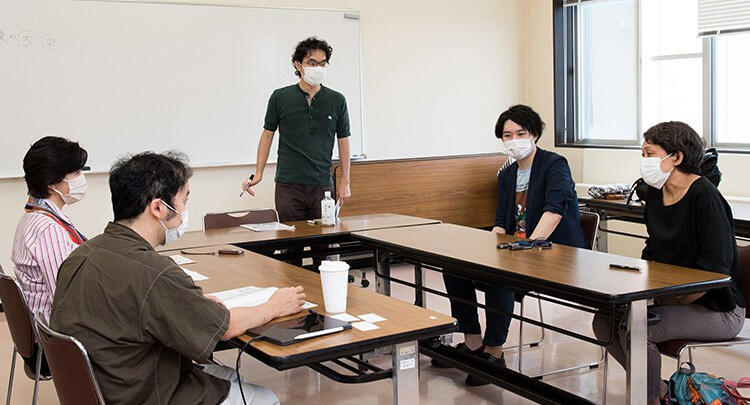
The 2021 edition of the White Paper states that in Society 5.0, the future society, it is vital to utilize "convergence of knowledge " that integrates knowledge from the natural sciences, humanities, and social sciences to realize everyone's overall well-being (WB). So, what should we do to make WB happen? Miwa Nishinaka, a professor at Graduate School of Management, Kagawa University, says that the process of "value co-creation," in which two or more people work together to create something good, will help.
To resolve conflicts between individuals and society
In Japan's mature economic society with a shrinking population and drastic changes in society and environment, people's values are becoming increasingly diverse. And now that we face disasters and new coronavirus infections, we can say that WB is a critical issue. Nishinaka is currently facing it through research that elicits innovative thinking and co-creates values, i.e., subjectively good things.
WB has various definitions, but Nishinaka divides them into two major groups.
One is personal WB, which, in a narrow sense, is a state where humans can exercise their potential. The other is social WB, which, in a limited sense, is a social state where you can have opportunities to seize personal happiness, and that state is guaranteed for the future.
Nishinaka says that there are conflicts between these WBs. For example, conflicts of interest exist between different personal WBs. There are conflicts between social WBs and personal WBs, such as a waste incinerator being necessary for society, but not wanting it in your neighborhood. And conflicts between social WBs are things like endangered species that need protection are living in a proposed dam site.
Nishinaka says that we have to think about how to eliminate these conflicts between WBs, or if eliminating them is not possible, balancing them at the very least. "To balance between WBs, it is important to create a place for value co-creation and have everyone participate. And to get people to participate, the place has to have a mechanism from which participants can grow and benefit, and it also needs to be fun," says Nishinaka.
Sharing tacit knowledge is important
In value co-creation research, several teams of four or five people conduct an experimental workshop of about two hours. The teams are given a task to achieve WB, like "to think about how this region should be in 20 years." They then statistically analyze the statements given in the process of answering the task to find out what kind of interactions produce valuable outputs, develop participants' abilities, and foster new leadership skills.
"During these interactions, knowledge or a solution that has not been thought of before (tacit knowledge) sometimes come up in a flash. Sharing such knowledge is very important for value co-creation, and it is crucial to capture that moment of awareness. I'm working on progressing my research, believing workshops are one of the ways to share tacit knowledge," says Nishinaka.

On top of these workshops, ART SETOUCHI, an art festival, takes place in the Seto Inland Sea every three years on the islands. Nishinaka is investigating how the relationship between visitors, locals, and the intermediaries that connect the two parties realizes value co-creation aiming at the WB of the region. At the festival, viewers experience the island while looking at the artworks exhibited all over the islands. Many people visit the islands and talk about them ― repeated visits leads to praise for islanders' identities, which Nishinaka believes is vital for the WB of the region.
The future is something we "create," not something that "happens"
"The subjective happiness of the individual is important, but I believe that if the whole society is not happy, then you are not happy either. Beyond this, if the future generations of your children and grandchildren will not be happy, you cannot be happy now. The future is something we 'create' actively, not something that 'happens.'" Nishinaka is paying attention to a method called "science fiction prototyping" as a tool to prototype a future image collaboratively and look at and think about the present from that future (see later column).
At our request, Nishinaka gave a message to the young generation who will create the future. "It would be good to imagine the future you desire and yourself enjoyably, and then come back from there to think about what you can do now. The important thing is to continue to think as a participant in the creation."
A society where WB can happen will not be created by someone special but by everyone participating and working together. What is WB for you, what is WB for society, and what kind of future do you want to create? Every one of us is required to think consciously.

Miwa Nishinaka
Professor at Graduate School of Management, Kagawa University
She received her Ph.D. in Knowledge Science from Japan Advanced Institute of Science and Technology (JAIST) in 2015. Prior to joining Kagawa university, she was a researcher at JAIST from 2015 to 2016 and an associate professor at the Graduate University for Advanced Studies from 2016 to 2019.
[Column] What is SF Prototyping?
SF in the name "SF Prototyping" refers to science fiction. More than a few past science fiction works, written with the future in mind, have guessed correctly about the future world (i.e., the present). SF prototyping is "a method for discussing and sharing future visions with others by creating prototypes of visions that have not been realized, based on science fiction ideas." This idea is starting to gain attention in the business world ("SF Prototyping: New Strategies for Generating Innovation from Science Fiction," written & edited by Dohjin Miyamoto, Yuuki Namba, and Hirotaka Osawa, published by Hayakawa Shobo).
We observed the pilot SF prototyping workshop conducted by Nishinaka with the book's writer & editor, Hirotaka Osawa, Assistant Professor at the Faculty of Engineering, Information and Systems, University of Tsukuba, and Dohjin Miyamoto, a researcher at the same laboratory and fellow author.
First, they decided on a theme. Then Miyamoto, the moderator of the workshop, solicited keywords from the participants. While talking with the participants, he combined keywords that seemed unrelated to each other to expand everyone's ideas and create a future story.
"It's not easy for any company to think about what needs will exist in decades from now. SF prototyping is gaining prominence as a method to weave a future vision in such cases. While freely generating ideas, participants create a future vision as if they were writing a novel. Then, they work backward from the future vision to think about the present and what has to be done right now. Issues that became clear during the discussion and required technical elements are also important. I think this is a method that can be used not only in business but in a wider range of situations," says Miyamoto.

Original article was provided by the Science Portal and has been translated by Science Japan.




